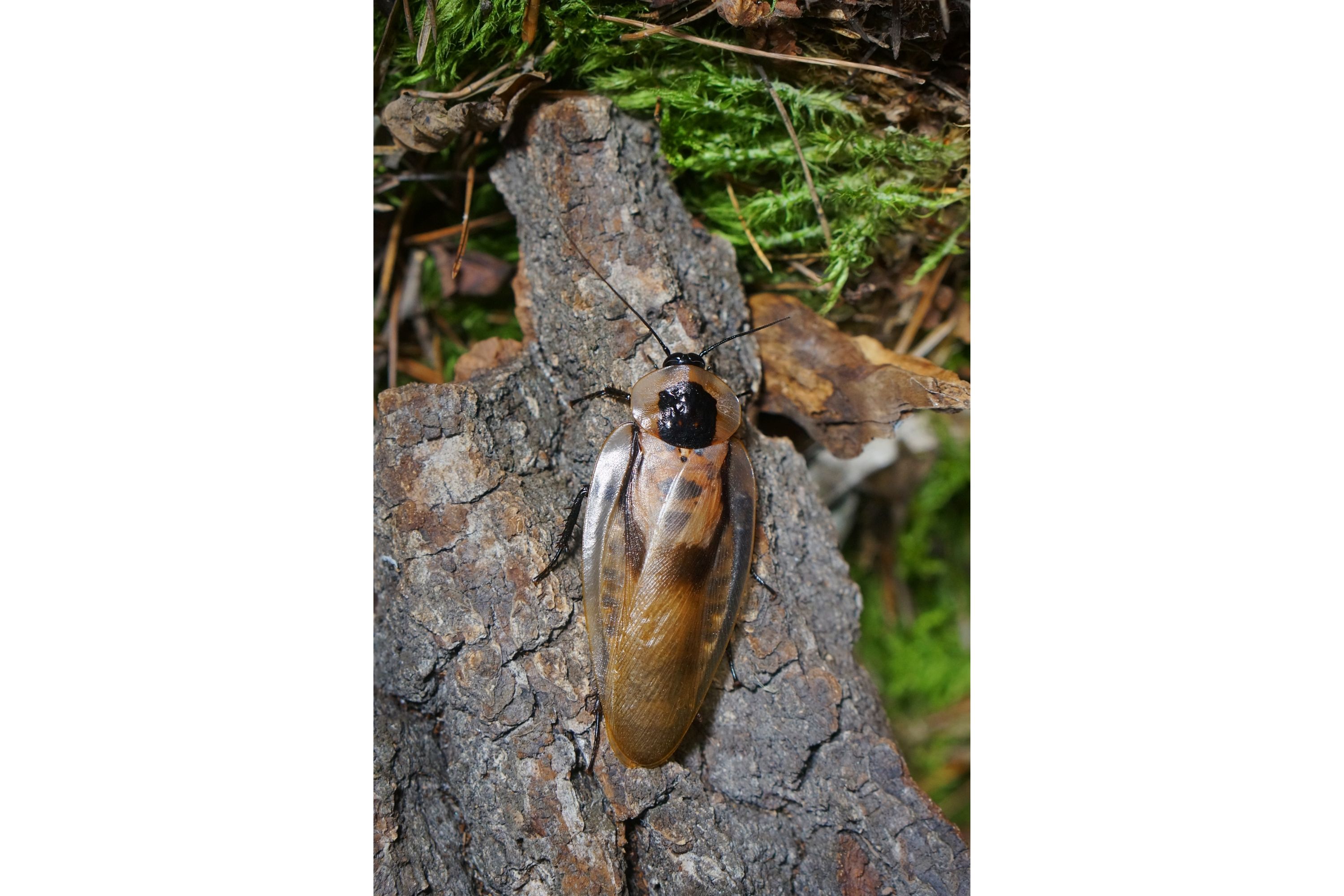Death's head cockroach
(Blaberus craniifer)

Description
The death's head cockroach, Blaberus craniifer, is a species of cockroach belonging to the family Blaberidae. It is often confused with the discoid cockroach, Blaberus discoidalis, due to its similar appearance. It is distinguished by jet black cloak-like marking on its wings and a skull-shaped, amber/black marking on its pronotum. The name death's head comes from the markings on the top of the pronotum: "cranii", which is Latin for "of the head", and "fer", meaning "carry" or "carrier." Due to their unique appearance and certain characteristics, they make an easy to care for pet or display insect for entomologists and hobbyists. B. craniifer is native to Mexico, the West Indies, and Central America. It has also been introduced into southern Florida in the United States. They can be found on forest floors, hiding in leaf matter and rotting wood. In their native habitats, B. craniifer will feed on any organic food source available, including leaf matter. In captivity, it is recommended they are provided foods like fresh fruit and vegetables, wet dog food and moist cereal. B. craniifer is potential prey for both invertebrates, such as spiders, mantids, centipedes, and parasitoid wasps, and vertebrate insectivorous animals, including fish, amphibians, reptiles, birds and mammals. In response to a predator approaching or after an attack, B. craniifer burrows itself into softer substrates when possible, using its head and pronotum, allowing the cockroach to hide. Cockroaches are gregarious insects, meaning they often interact and associate with one another. B. craniifer secretes a volatile aggregative pheromone from the mandibular glands when engaging in gregarious behaviour. Blaberus is a genus of cockroaches generally found in South America. About 19 species are in the genus, and they are popular among hobbyists as feed for other arthropods (Blaberus discoidalis in particular serves this function) or as pets. Unlike several genera of cockroaches considered to be pests, this genus keeps its ootheca in its abdomen until the time it hatches. They generally require a relative humidity of 60% or higher to thrive and temperatures above 25 °C (28-30 °C is best) to reproduce.
Taxonomic tree:







